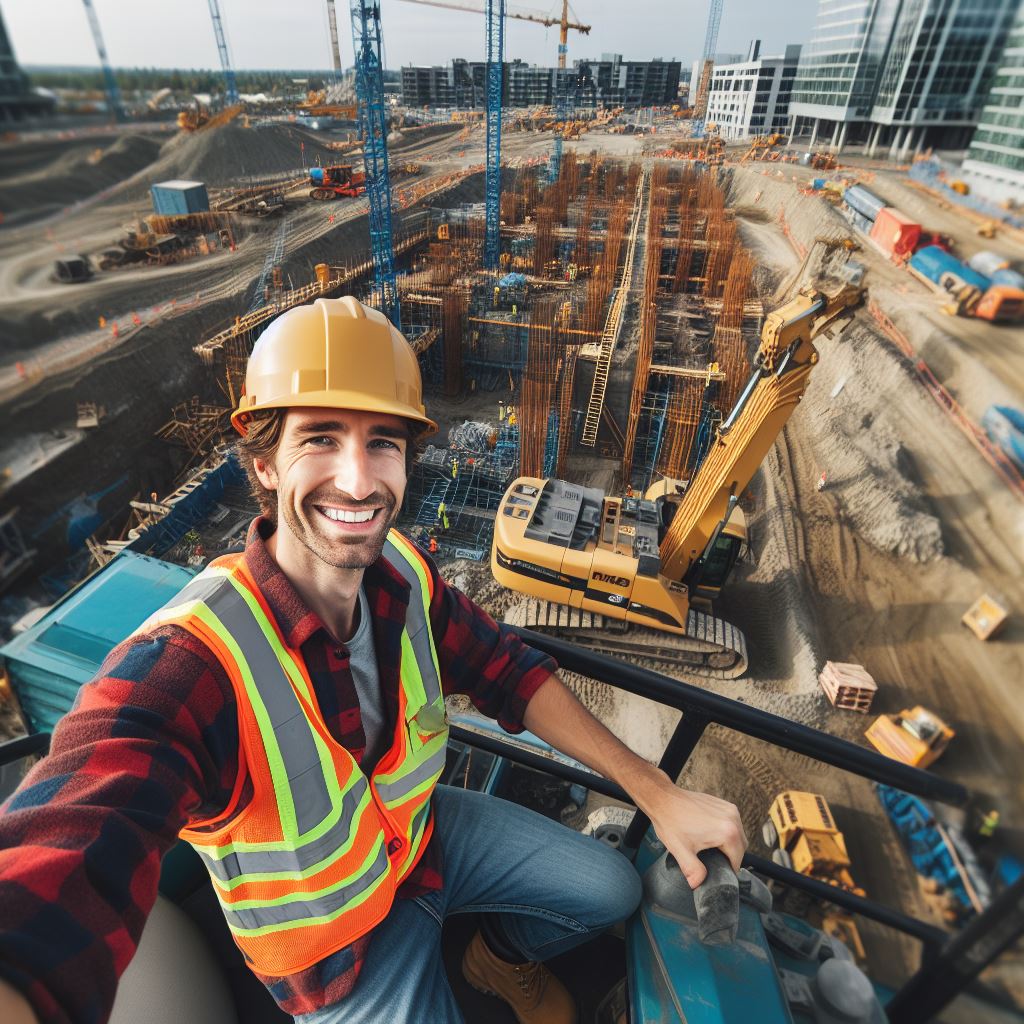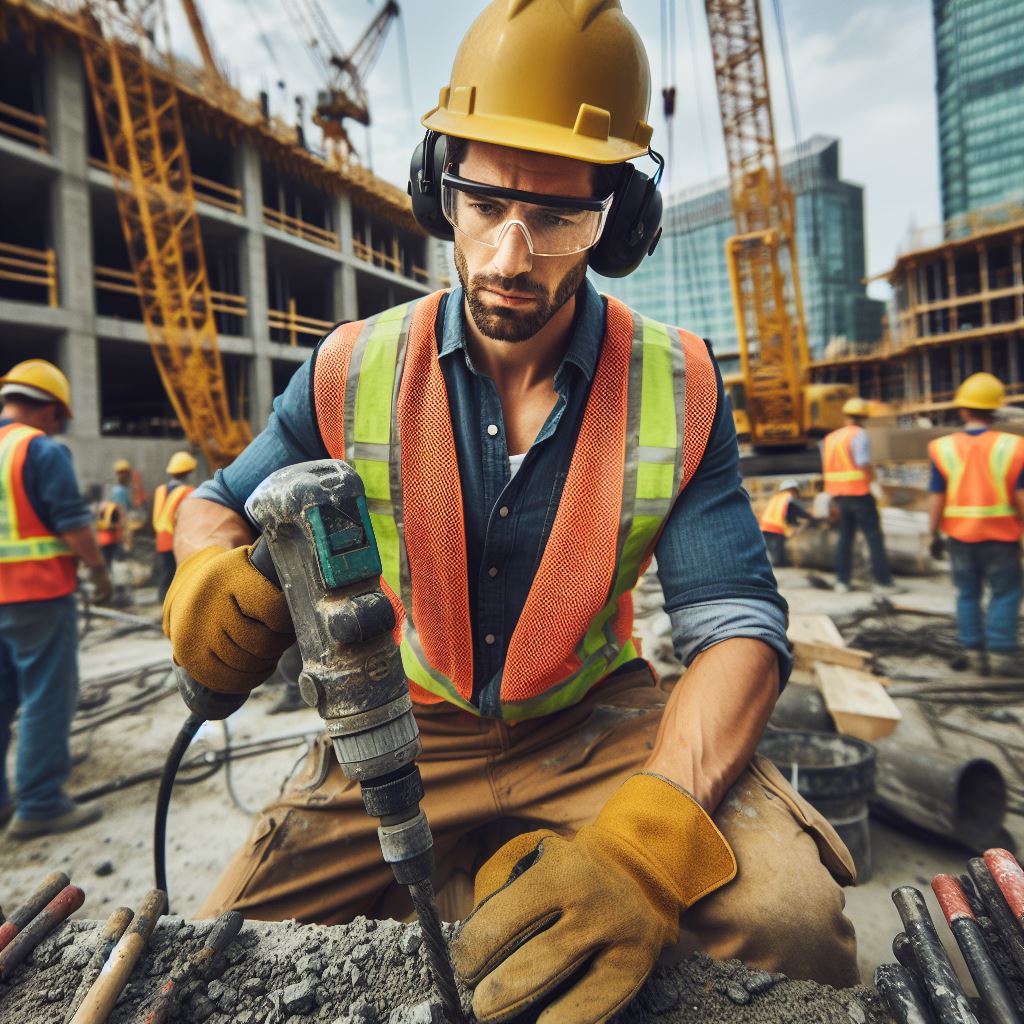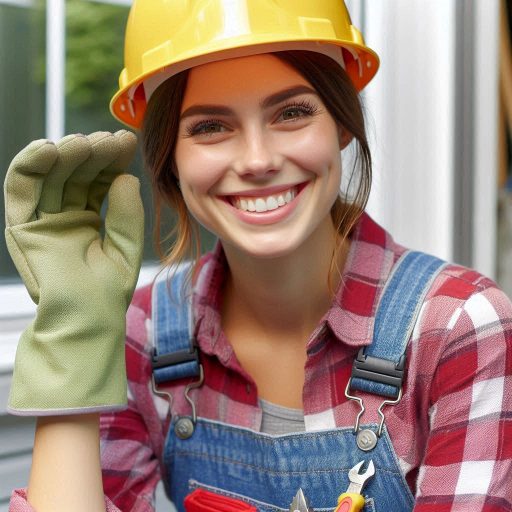Introduction
Workplace safety is of utmost importance for the well-being and productivity of employees.
Addressing workplace hazards in the construction industry is crucial for preventing accidents and injuries.
Within the dynamic realm of contemporary construction, the intricate dance between progress and peril defines the narrative of workplace safety in building projects.
As the industry continues to forge ahead with groundbreaking technologies and architectural feats, it simultaneously grapples with an array of potential hazards that demand meticulous attention.
From the physical challenges presented by heavy machinery and complex structures to the nuanced intricacies of environmental risks, the landscape of construction sites embodies a delicate balance between innovation and the imperative of safeguarding human lives.
In this intricate tapestry of construction, the significance of prioritizing workplace safety becomes paramount.
The evolving nature of construction hazards necessitates a proactive and adaptive approach, where a deep understanding of potential risks is coupled with a commitment to harnessing cutting-edge solutions.
This intersection of human-centric mindfulness and technological prowess lays the foundation for a harmonious coexistence between progress and well-being.
As we embark on this exploration of workplace hazards in building, our journey will unravel the layers of challenges faced by the industry, shedding light on the proactive measures and innovative interventions that not only mitigate risks but also cultivate an environment where safety and efficiency coalesce.
From the adoption of advanced safety protocols to the integration of smart technologies designed to anticipate and prevent potential dangers, the construction landscape is witnessing a transformative wave that seeks to redefine the narrative of workplace safety.
Join us in unraveling the complexities and unveiling the strategies that promise to shape a safer, more resilient future for the builders of tomorrow.
Understanding Workplace Hazards in Building
In the construction industry, workers are exposed to various hazards that can jeopardize their safety and wellbeing.
It is essential to identify, understand, and address these hazards to ensure a secure working environment.
This blog section will discuss the different types of hazards commonly found in construction sites and explain the potential risks and consequences associated with each hazard.
Additionally, it will highlight the importance of recognizing and proactively addressing these hazards to prevent accidents and injuries.
Types of Hazards
- Falls: Falls are one of the most prevalent hazards in construction sites. Working at heights without proper safety measures can result in severe injuries or even fatalities.
- Electrical Hazards: Construction sites often involve electrical equipment and wiring, posing risks of electric shocks, burns, and fires if not handled with caution.
- Noise: Construction sites are known for their loud noise levels, which can lead to hearing damage over time if workers are not adequately protected.
- Chemical Hazards: Exposure to hazardous substances, such as solvents, paints, and asbestos, can cause acute or chronic health issues if not managed properly.
- Equipment Hazards: Improper use or malfunctioning of heavy machinery, tools, or equipment can result in severe injuries, amputations, or even fatalities.
- Fires: Construction sites are prone to fires due to the presence of flammable materials, faulty wiring, or equipment. Fires can cause injuries, destruction, and loss of life.
- Collapsed Structures: The collapse of scaffolding, trenches, or buildings can crush or bury workers, leading to fatal injuries and trapping victims under debris.
- Exposure to Extreme Conditions: Construction work often involves exposure to extreme temperatures, weather conditions, or confined spaces, which can lead to heat strokes, frostbite, or asphyxiation.
Risks and Consequences
Understanding the risks associated with each hazard is crucial for the wellbeing of construction workers:
- Falls can result in broken bones, spinal cord injuries, traumatic brain injuries, or even death.
- Electrical hazards can cause electric shocks, burns, cardiac arrest, and in severe cases, electrocution.
- Excessive noise levels can lead to permanent hearing damage, tinnitus, and difficulty in communication.
- Chemical hazards can cause respiratory issues, skin irritation, organ damage, and long-term health conditions.
- Malfunctioning equipment can result in amputations, crush injuries, fractures, or fatal accidents.
- Uncontrolled fires can cause severe burns, smoke inhalation, asphyxiation, and significant property damage.
- Collapsed structures can crush or bury workers, causing fatal injuries and making rescue operations challenging.
- Extreme weather conditions can lead to heat exhaustion, heatstroke, hypothermia, or oxygen deprivation in confined spaces.
Addressing Hazards Proactively
To ensure the safety and wellbeing of construction workers, it is essential to address hazards proactively:
- Educate and Train: Provide comprehensive training on hazard recognition, preventive measures, and proper use of safety equipment.
- Implement Safety Protocols: Develop and enforce strict safety protocols that include personal protective equipment (PPE) requirements, safe work procedures, and emergency response plans.
- Regular Inspections: Conduct frequent inspections to identify hazards, ensure compliance, and address any potential risks promptly.
- Clear Communication: Establish effective communication channels to ensure all workers are informed about potential hazards and safety procedures.
- Provide Adequate PPE: Supply appropriate personal protective equipment, such as helmets, safety glasses, gloves, and hearing protection, and ensure their proper use.
- Emphasize Proper Equipment Use: Train workers on the correct handling and maintenance of machinery, tools, and equipment to minimize the risk of accidents.
- Promote a Safety Culture: Encourage a positive safety culture by recognizing and rewarding safe behaviors, promoting an open reporting system, and addressing safety concerns promptly.
- Regular Training Updates: Provide regular refresher training sessions to keep workers up to date with the latest safety practices and regulations.
By recognizing and addressing workplace hazards proactively, construction companies can create a safe and secure environment, reduce accidents and injuries, and protect the wellbeing of their workers.
Read: Innovative Tech Transforming Construction
Identifying Workplace Hazards
The process of hazard identification in a construction site
In order to ensure a safe working environment, it is crucial to properly identify workplace hazards in a construction site.
Hazard identification involves a systematic process of recognizing potential dangers that may cause harm or injury to workers.
The role of risk assessments and inspections in identifying potential hazards
One effective method of hazard identification is conducting risk assessments.
These assessments involve evaluating the tasks and activities performed in the workplace to determine the associated risks.
By thoroughly assessing the job site, potential hazards can be identified and appropriate control measures can be implemented.
Regular inspections also play a vital role in identifying hazards. Inspections involve carefully examining the workplace, equipment, and materials to identify any potential dangers.
Unlock Your Career Potential
Visualize a clear path to success with our tailored Career Consulting service. Personalized insights in just 1-3 days.
Get StartedDuring inspections, experts look for various factors such as faulty machinery, inadequate safety measures, and environmental hazards.
Examples of common workplace hazards in building and construction
Let’s delve into some examples of common workplace hazards in the building and construction industry:
- Falls from heights: Working on elevated surfaces without proper fall protection equipment can lead to severe injuries or even fatalities.
- Electrical hazards: Exposure to live wires, faulty electrical equipment, or improperly grounded systems may result in electrical shocks or burns.
- Heavy machinery accidents: Poorly maintained or operated machinery can cause workers to suffer crush injuries, limb amputations, or get caught in moving parts.
- Structural collapses: Inadequate construction or demolition practices may result in the collapse of buildings or structures, endangering the lives of workers.
- Fire hazards: Inadequate fire safety measures, faulty electrical wiring, or improper storage of flammable materials can lead to devastating fires and injuries.
- Excessive noise: Constant exposure to loud machinery or equipment can cause hearing loss and other auditory problems.
- Slips, trips, and falls: Uneven surfaces, cluttered pathways, improper scaffolding, or wet floors can significantly increase the risk of slips, trips, and falls.
- Manual handling: Lifting heavy loads, awkward postures, or repetitive tasks can lead to musculoskeletal disorders.
It is important to note that these examples are not exhaustive, and different construction sites may have other unique hazards.
The key is to remain vigilant and conduct regular hazard identification, risk assessments, and inspections to ensure the safety of all workers.
By identifying potential hazards and taking necessary precautions, such as implementing proper safety protocols, providing personal protective equipment, and offering extensive employee training, the risks associated with workplace hazards can be minimized.
Prioritizing the identification and mitigation of workplace hazards is essential for maintaining a safe and healthy work environment in the building and construction industry.
Read: Construction Law: What Workers Should Know

Preventing and Mitigating Workplace Hazards
Best practices for preventing workplace hazards
- All employees should receive proper training to identify and handle potential hazards.
- Personal protective equipment (PPE) should be provided and used at all times.
- Regular maintenance and inspections of equipment should be conducted to ensure their safety.
- Creating a safety culture that encourages reporting and addressing hazards is crucial.
The importance of hazard control measures and their implementation
Implementing effective hazard control measures is essential for ensuring a safe work environment:
- Hazard identification and assessment are necessary to determine the severity and potential risks.
- Eliminating or reducing hazards can prevent accidents and injuries.
- Implementing engineering controls, such as installing safety guards and barriers, can minimize risks.
- Administrative controls like work procedures and training can further mitigate hazards.
- Regular monitoring and evaluation of control measures ensure their effectiveness.
The significance of communication and collaboration among workers for hazard prevention and mitigation
A strong emphasis on communication and collaboration can greatly enhance workplace safety:
- Workers should have open channels to report hazards and near misses without fear of repercussions.
- Regular safety meetings and toolbox talks can facilitate discussion and awareness about potential hazards.
- Encouraging employees to actively participate in identifying and resolving hazards fosters a proactive safety culture.
- Collaboration between workers, supervisors, and management helps in the effective implementation of control measures.
- Establishing a reporting system for potential hazards ensures prompt action and continuous improvement.
By following these best practices, organizations can create a safer and healthier work environment for all employees.
Preventing workplace hazards is not only a legal and ethical responsibility but also leads to improved productivity and employee satisfaction.
Read: Educational Paths for Aspiring Builders
Reporting and Dealing with Workplace Hazards
Importance of Reporting Workplace Hazards Promptly
- Prompt reporting of workplace hazards ensures timely actions to prevent accidents and injuries.
- Reporting allows employers to identify and address potential dangers, ensuring a safer work environment.
- Timely reporting also enables employers to allocate resources and implement necessary safety measures.
Appropriate Channels for Reporting Hazards in the Workplace
- Employees should report workplace hazards to their immediate supervisor or manager.
- Companies may also provide dedicated reporting systems such as hotlines, email, or online forms.
- In some cases, unions or safety representatives can help employees escalate their concerns.
Responsibilities of Employees and Employers in Dealing with Reported Hazards
- Employees have a responsibility to report hazards promptly and accurately to their employers.
- Employers are responsible for acknowledging and investigating reported hazards in a timely manner.
- Employers must take appropriate actions to eliminate or control hazards, ensuring employee safety.
- Employees and employers should collaborate to establish preventive measures and implement safety protocols.
Role of Regulatory Bodies in Addressing Workplace Hazards
- Regulatory bodies, such as occupational health and safety agencies, play a crucial role in ensuring workplace safety.
- These bodies establish and enforce safety regulations and standards that employers must adhere to.
- They conduct inspections, investigations, and audits to identify and address workplace hazards.
- Regulatory bodies may issue fines, penalties, or sanctions for non-compliance with safety regulations.
- They provide guidance, training, and resources to help employers and employees mitigate workplace hazards.
Involvement of Regulatory Bodies in Addressing Workplace Hazards
- Regulatory bodies collaborate with employers to develop and implement safety programs and policies.
- They provide support in developing risk assessments and safety plans tailored to specific industries.
- Regulatory bodies also educate employers and employees on best practices for hazard prevention.
- They monitor workplace conditions and conduct thorough investigations when incidents occur.
- In severe cases, regulatory bodies may intervene, suspend operations, or revoke licenses to protect personnel.
In a nutshell, reporting and dealing with workplace hazards promptly is essential for ensuring a safe and secure working environment.
Employees and employers must take responsibility for reporting hazards, and appropriate channels should be established to facilitate this process.
Regulatory bodies play a crucial role in setting safety standards, monitoring compliance, and taking action against non-compliance.
By working together, all stakeholders can create a culture of safety where workplace hazards are effectively addressed.
Read: Seasonal Impacts on Construction Work
Conclusion
Addressing workplace hazards in building is of utmost importance.
Throughout this blog section, we have highlighted the significance of prioritizing workplace safety and taking necessary precautions.
By summarizing the main points discussed, we have emphasized the need to identify and mitigate hazards in our own work environments.
Remember, workplace safety should never be taken lightly, and it is up to each individual to ensure their own well-being.
Take action now to create a safer work environment.




